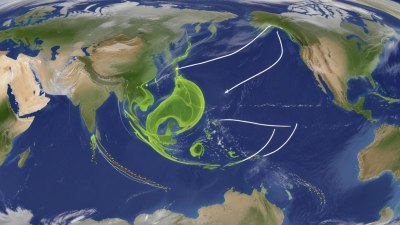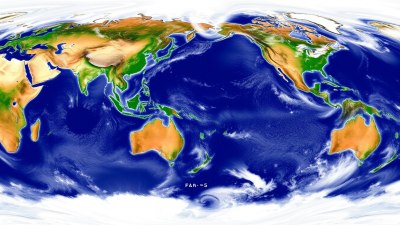The Role of the Jet Stream in Weather
Explore how jet streams influence weather patterns and climate changes globally.

This image was created with the assistance of Freepik
The jet stream is a significant component of the Earth's atmosphere, playing a crucial role in shaping weather patterns and influencing climate around the globe. Understanding the jet stream is essential for meteorologists and anyone interested in the dynamics of our atmosphere. This article delves into what the jet stream is, how it operates, its various effects on weather, and its connection to climate change.
At its core, the jet stream is a narrow band of strong winds located in the upper levels of the atmosphere, usually between 6 to 12 kilometers (4 to 7 miles) above the Earth's surface. The primary jet streams, the polar jet and the subtropical jet, are driven by temperature differences between the polar regions and the warmer equator. These winds can reach velocities exceeding 200 miles per hour and are not static; they meander and shift based on seasonal changes, atmospheric conditions, and interactions with land and oceanic influences.
Mechanics of the Jet Stream
The jet stream is formed due to the rotation of the Earth and the differential heating of its surface. As the sun heats the Earth unevenly, the temperature contrasts create a pressure difference that produces winds. The jet stream acts as a boundary between cold polar air and warm tropical air. When these air masses interact, the jet stream can become more pronounced, resulting in distinct weather patterns.
Throughout the year, the jet stream's position changes. In winter, it typically shifts southward, bringing colder air into mid-latitudes, while in summer, it retreats northward, allowing for warmer tropical air to dominate these areas. The shape and location of the jet stream are influenced by various factors, including the geography of continents and oceans, as well as seasonal weather phenomena like El Niño and La Niña.
Jet Stream Patterns and Weather Impacts
The patterns formed by the jet stream have a significant impact on the weather experienced by millions across the globe. A strong, straight jet stream can lead to stable weather and less severe conditions, while a wavier jet stream, characterized by deep troughs and ridges, often results in volatile and dynamic weather. This wavy pattern can cause extreme weather events including heatwaves, droughts, severe storms, and heavy rainfall.
When the jet stream dips south, it creates troughs that can allow cold air to plunge into lower latitudes. For example, winter storms in the United States are often associated with such dips in the jet stream. Conversely, when the jet stream bulges northward into a ridge, it can lead to prolonged periods of warm weather.
The Jet Stream and Climate Change
In recent years, scientists have raised concerns about how climate change may be influencing the jet stream's behavior. As global temperatures rise, the difference in temperature between the poles and the equator may decrease, potentially leading to a weaker jet stream. A weaker jet stream is more prone to extreme wandering, which may result in prolonged weather events, such as extended drought or heavy rainfall in certain regions.
Research has suggested that the Arctic region's rapid warming could further destabilize the jet stream, leading to increased instances of extreme weather. These changes can have far-reaching consequences, from agricultural impacts due to shifting weather patterns to increased flooding and other natural disasters.
Forecasting and the Future of the Jet Stream
Weather forecasting relies heavily on understanding the jet stream's position and behavior. Meteorologists use advanced computer models that simulate the atmosphere and predict how the jet stream will change, allowing them to make more accurate weather predictions. Innovations in technology and modeling continue to improve our ability to forecast weather, taking into consideration the complexities of the jet stream.
As we look to the future, understanding the jet stream's interaction with climate is paramount. Policymakers and researchers must collaborate to assess these changes and mitigate the impacts on society. Improved models and better observational data will be fundamental in forecasting not only day-to-day weather but also long-term climatic trends associated with the adjustments in jet stream patterns.
The jet stream is a vital aspect of Earth's atmospheric dynamics, influencing weather globally in profound and complex ways. As temperatures rise and climate changes unfold, the jet stream may behave unpredictably, representing both a challenge and an opportunity for those tasked with understanding and mitigating the impacts of our changing climate. Awareness and understanding of the jet stream can enhance our preparedness for extreme weather events and help in adapting to the challenges that lie ahead.











